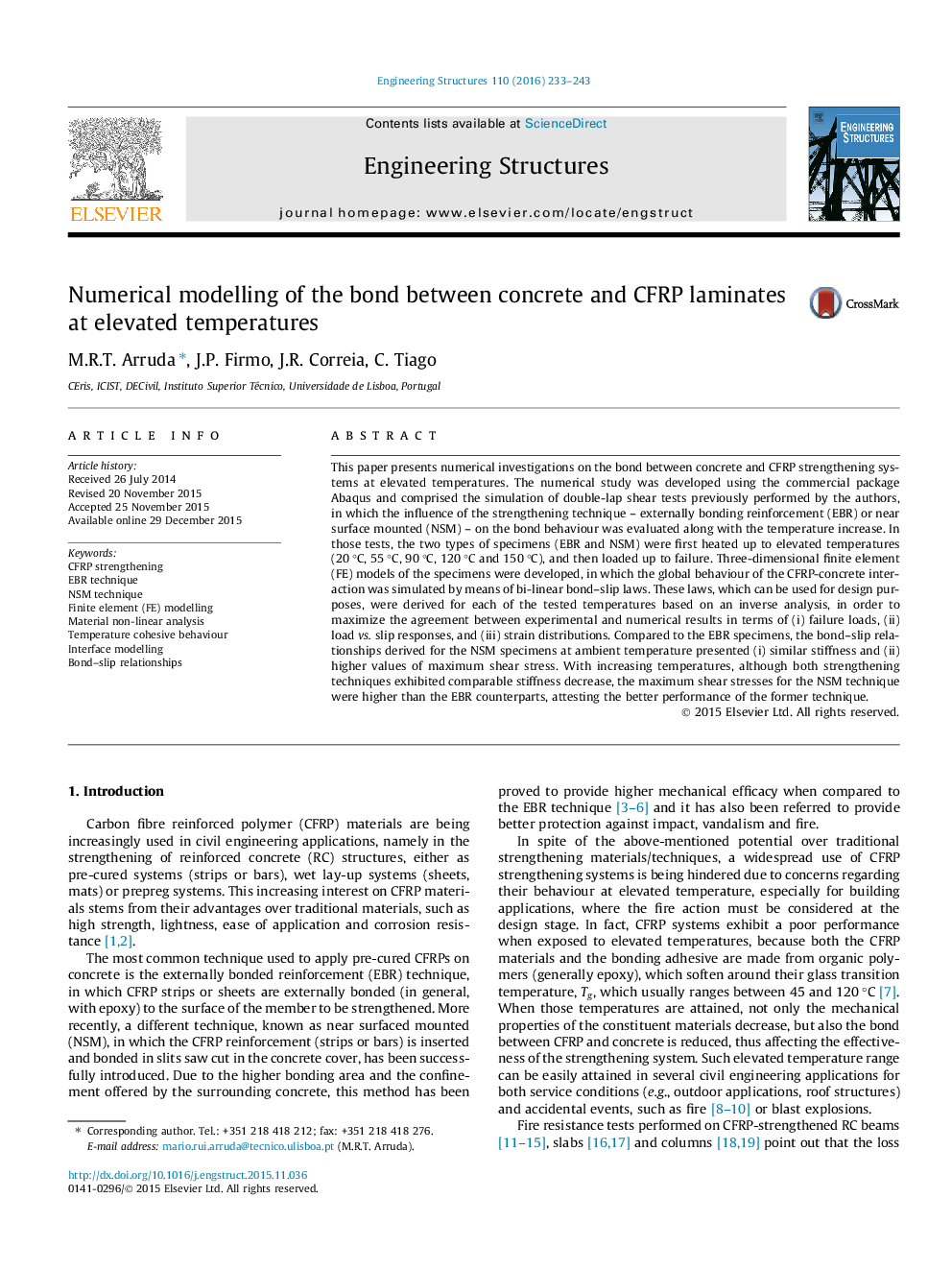| Article ID | Journal | Published Year | Pages | File Type |
|---|---|---|---|---|
| 265908 | Engineering Structures | 2016 | 11 Pages |
•CFRP strengthening techniques with EBR and NSM.•Finite element (FE) modelling with material non-linear analysis.•Temperature cohesive behaviour for EBR and NSM.•Interface modelling with Bond–slip relationships.
This paper presents numerical investigations on the bond between concrete and CFRP strengthening systems at elevated temperatures. The numerical study was developed using the commercial package Abaqus and comprised the simulation of double-lap shear tests previously performed by the authors, in which the influence of the strengthening technique – externally bonding reinforcement (EBR) or near surface mounted (NSM) – on the bond behaviour was evaluated along with the temperature increase. In those tests, the two types of specimens (EBR and NSM) were first heated up to elevated temperatures (20 °C, 55 °C, 90 °C, 120 °C and 150 °C), and then loaded up to failure. Three-dimensional finite element (FE) models of the specimens were developed, in which the global behaviour of the CFRP-concrete interaction was simulated by means of bi-linear bond–slip laws. These laws, which can be used for design purposes, were derived for each of the tested temperatures based on an inverse analysis, in order to maximize the agreement between experimental and numerical results in terms of (i) failure loads, (ii) load vs. slip responses, and (iii) strain distributions. Compared to the EBR specimens, the bond–slip relationships derived for the NSM specimens at ambient temperature presented (i) similar stiffness and (ii) higher values of maximum shear stress. With increasing temperatures, although both strengthening techniques exhibited comparable stiffness decrease, the maximum shear stresses for the NSM technique were higher than the EBR counterparts, attesting the better performance of the former technique.
